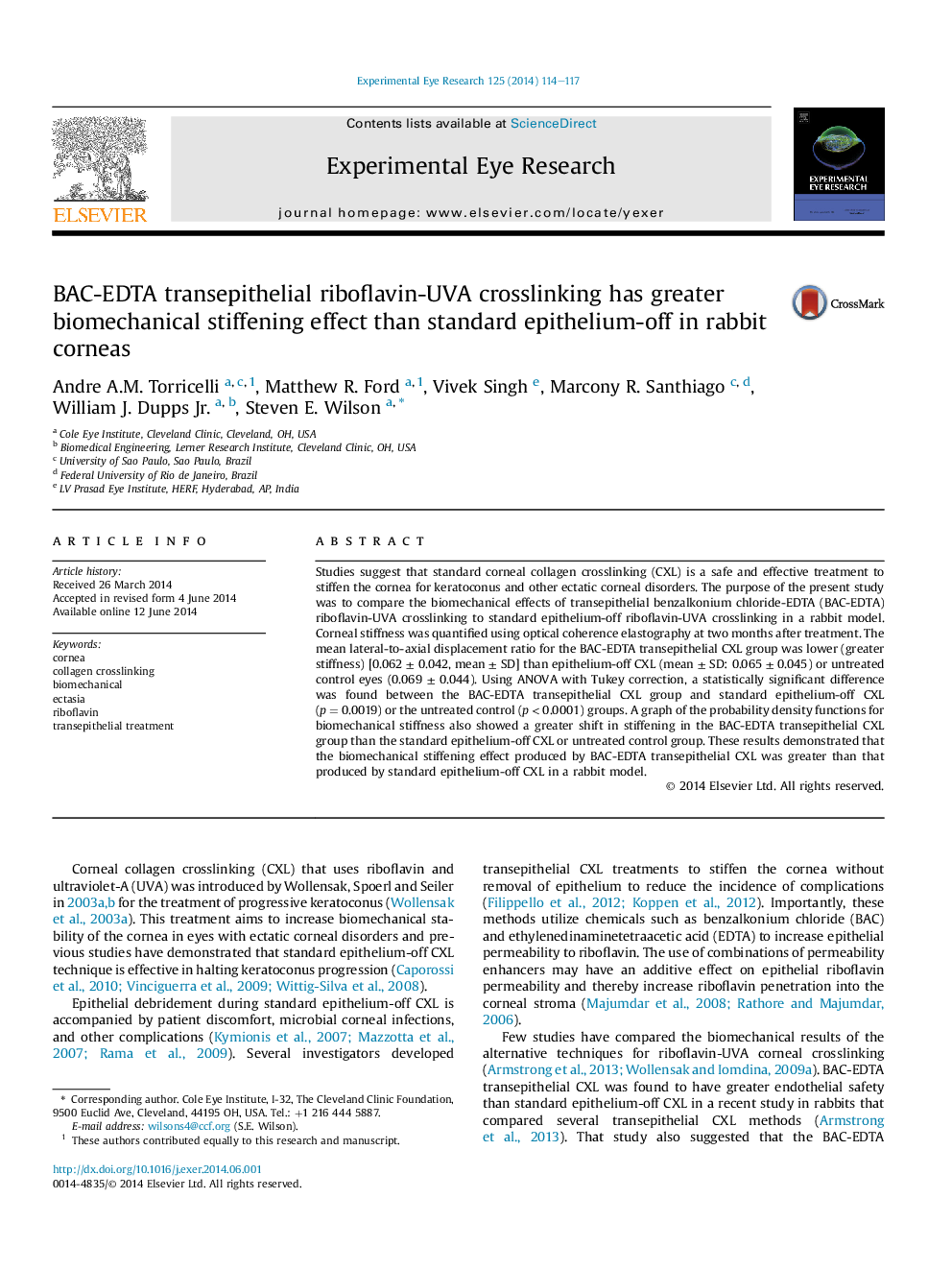| Article ID | Journal | Published Year | Pages | File Type |
|---|---|---|---|---|
| 6196985 | Experimental Eye Research | 2014 | 4 Pages |
â¢Transepithelial crosslinking (CXL) produces more corneal stiffening than epithelium-off CXL.â¢Agents that break down epithelial barrier function are critical for transepithelial CXL.â¢The extent of keratocyte cell death may have a role in the crosslinking stiffening effect.
Studies suggest that standard corneal collagen crosslinking (CXL) is a safe and effective treatment to stiffen the cornea for keratoconus and other ectatic corneal disorders. The purpose of the present study was to compare the biomechanical effects of transepithelial benzalkonium chloride-EDTA (BAC-EDTA) riboflavin-UVA crosslinking to standard epithelium-off riboflavin-UVA crosslinking in a rabbit model. Corneal stiffness was quantified using optical coherence elastography at two months after treatment. The mean lateral-to-axial displacement ratio for the BAC-EDTA transepithelial CXL group was lower (greater stiffness) [0.062 ± 0.042, mean ± SD] than epithelium-off CXL (mean ± SD: 0.065 ± 0.045) or untreated control eyes (0.069 ± 0.044). Using ANOVA with Tukey correction, a statistically significant difference was found between the BAC-EDTA transepithelial CXL group and standard epithelium-off CXL (p = 0.0019) or the untreated control (p < 0.0001) groups. A graph of the probability density functions for biomechanical stiffness also showed a greater shift in stiffening in the BAC-EDTA transepithelial CXL group than the standard epithelium-off CXL or untreated control group. These results demonstrated that the biomechanical stiffening effect produced by BAC-EDTA transepithelial CXL was greater than that produced by standard epithelium-off CXL in a rabbit model.
